This treehouse documents Mrs. Clayberg's 6th grade classes exploring their ideas about snails, developing their own questions, and forming experiments to test out their hypotheses. The inquiry cycle shown here is a guided investigation based on lessons from the Diversity of Life Foss Curriculum.
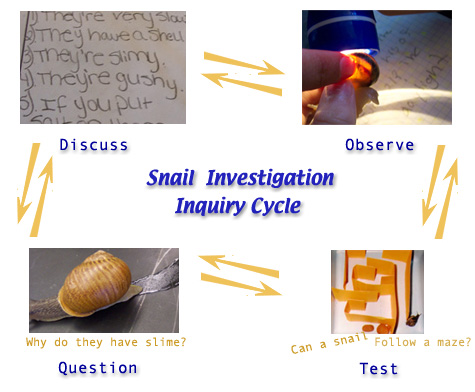
The Inquiry Cycle: Discuss
Click here to listen to what one student knows about snailsWhat I Know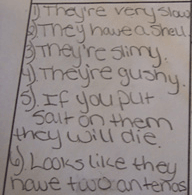 |
What I Want to Know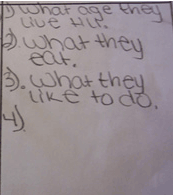 |
Later, students will add what they learned.
The KWL: Starting with What We Know and What We Want to Know.
A KWL (What you know, What you Want to Know and What you have Learned) helps students organize their knowledge and access their prior understanding.
During the KWL discussion time Mrs. Clayberg's students recall many
things they learned about snails from watching a video and from their
own personal experiences, both orally and in writing.
Return to top
The Inquiry Cycle: Observe and Question
Observing the snails prompted many questions. The images below illustrate what the students were observing and the questions that they posed. Widen the screen until two images appear side by side
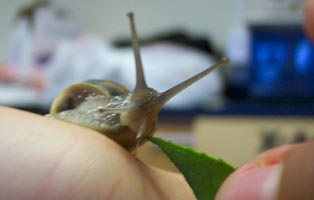
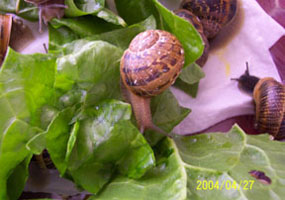
- How does a snail eat?
- What does a snail eat?

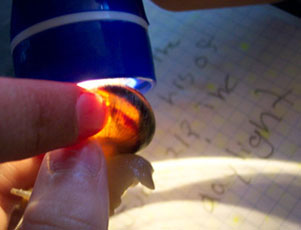
- How do you see a snail's heartbeat?
- Does the size of an animal affect the rate (speed) of its heartbeat?
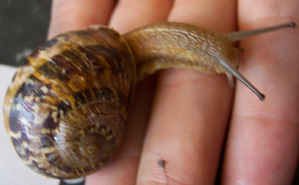
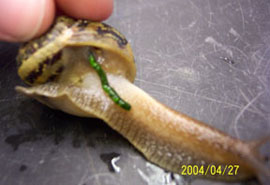
- What are snail shells made of and why does a snail need the chalk we put in its terrarium?
- Is this snail poop? What is in snail excrement?
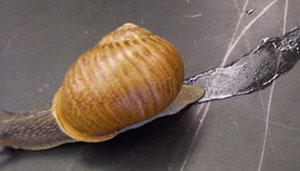
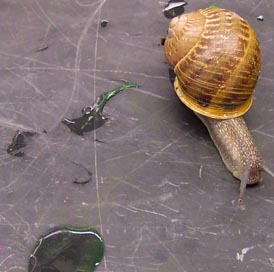
- Why does my snail make green slime?
- What is the slime? What do they make the slime for? Why does the slime bubble?
- Why do they sometimes go back into their shells and produce a coating of slime where the shell opens?
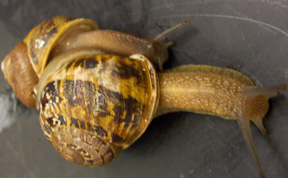
- What ARE they doing when they are crawling all over each other? Are they mating?
- Why do they mate if they are hermaphrodites!?
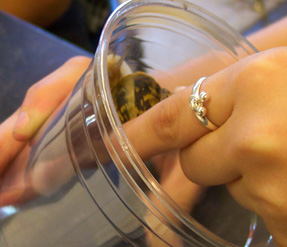
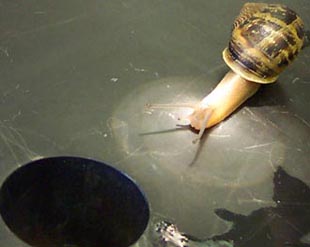
How do they move? Why can't I get them out of the cup?
- Can I pull the snails body out of its shell when I take it from the cup?
- How should I handle the snails and not hurt them?
The Inquiry Cycle:Test
The students in Mrs. Clayberg's class came up with a variety of questions to investigate.
|
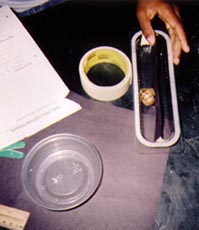 |
Question: Do snails like hot or cold temperatures?

- Hypothesis: If the snail is given a choice of a hot or cold environment it will choose a cold environment.
- Data Collection and Measurement: Measure how long the snail stays in each cup (one cup filled with hot water and one cup filled with cold water). Observe the snails in the cups and record observations and water temperature every minute.
- Materials: I cup with ice cold water. 1 cup with hot water, 2 measuring cups and 2 snails.
- Procedure: Put hot water in one cup and cold water in another. Minute 1 Cold 10 degrees Celsius. Hot water 50 degrees Celsius. Put one snail in the measuring cup and the other snail into the other measuring cup. Then watch what the snails do.
- Results: One snail liked both hot and cold water. One snail liked only cold. In one test the snail didn't want to be in either cup of water. The snail seemed to like the cold water better than the hot water because it moved out of the hot water cup. The snails moved out of the hot water cup.
- Conclusion: The snails like the cold water better because they didn't try and leave the cold water, but in the hot water they kept moving and tried to get out. Snails like cold water better. Snails prefer open spaces because they were trying to get out of both cups.
Question: Can a Snail Follow a Maze? Can a Snail Get Out of a Maze?
- Hypotheses: If you put a snail in a maze it will crawl over the sides and not go through. If the snail likes the food at the end it will go throught the maze. The snail will go through the maze.
- Data Collection: Measure the time it takes for the snail to get out of the maze. Observe, record, and measure the time.
- Materials: Box, construction paper, glue, food
- Procedure: First make the maze and put in the food. Then watch what the snail does.
- Results: The snail just climbed up over the walls of the maze. It only followed the maze for about 10 inches.
- Conclusion: The snails will not follow through a maze nor follow a food trail to the end. But we only did the test two times and did the test with different snails and different mazes. The snail must like to climb because each time they climbed over the cardboard maze wall.
Question: Which Snail Moves Faster?
- Hypothesis: If the snail is small than it will move faster because it has more energy.
- Data Collection and Measurement: Measure the time it took the snail to get from one end to the other.
- Materials: 3 snails 4 pieces of cardboard, clock and a ruler
- Procedure:
- Set cardboard in 2 parallel sections, or use plastic trays for snail race course
- Put snails at one end
- Watch the clock
- See how long it took and how far it went
- Results: The little snail didn't make it and went into its shell. The big snail won in 18 minutes, and he went the whole 9 inches. On the second test the big snail took 20 minutes.
- Conclusion: We think the big snail moved faster because it is older and has a good sense of direction and has more experience with moving.
Information on the Internet
- MIT's RoboSnails model novel movements RoboSnails (snail robots) were created at MIT to test mathematical models describing forms of snail movement.

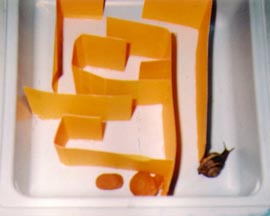
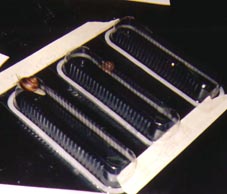


 Go to quick links
Go to quick search
Go to navigation for this section of the ToL site
Go to detailed links for the ToL site
Go to quick links
Go to quick search
Go to navigation for this section of the ToL site
Go to detailed links for the ToL site